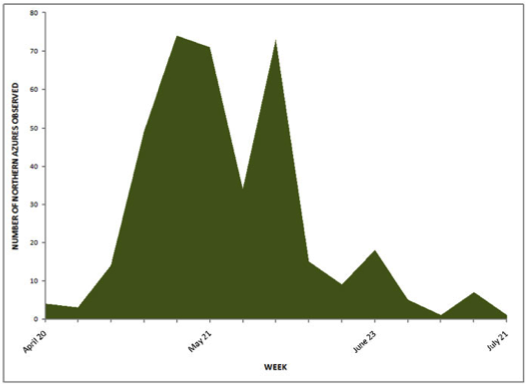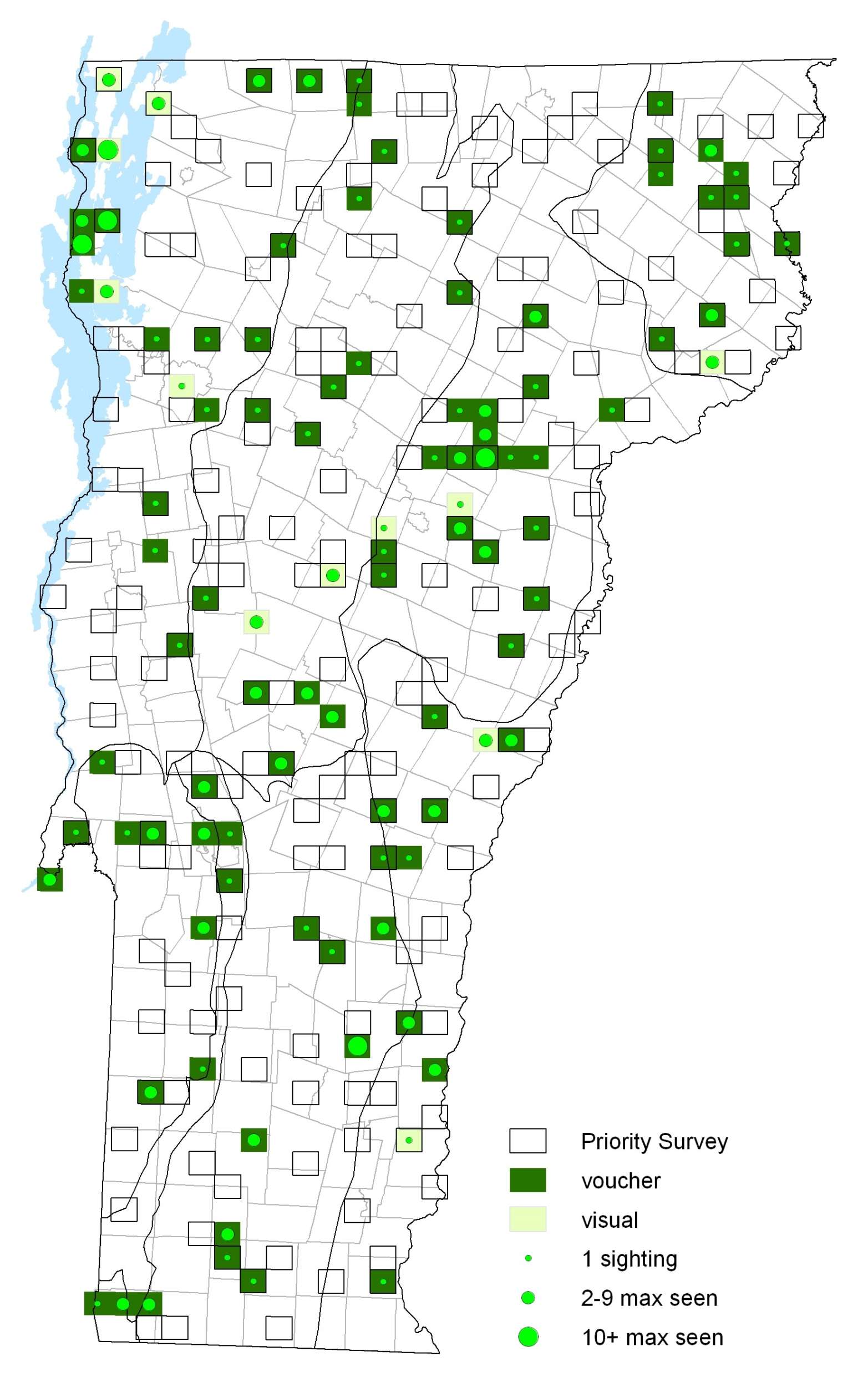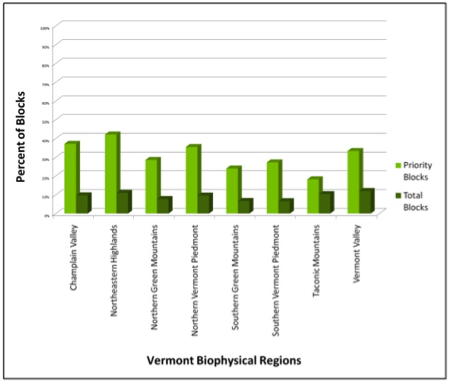|
Resident Conservation Status North American Range |
The life history of this butterfly has been poorly reported as its identification has been cloaked in mystery.
The Lucia Azure seems to be our earliest emerging Celastrina in Vermont and can be seen as early as late April and the beginning of May. Due to its dark ventral blotching and its early emergence, this species, or species complex, is less difficult to identify than others in the Celastrina group. Caterpillars overwinter as pupae.
Flight
The earliest emerging Celastrina in Vermont. The prolonged flight may indicate a complex of sibling species remains hidden in Vermont. Extreme dates from specimens: 18 April 2005 in Dorset (R. Stewart) and 21 July 2004 in Vershire (B. Pfeiffer).
Distribution and Habitat
Found to be common throughout most of Vermont during VBS, but as its name suggests, perhaps less common in southern Vermont. Because of recent taxonomic changes, historic records have not been recently determined.
Found in woodland edges and scrubby habitats. Larvae feed on flowers and buds of mostly blueberries (Vaccinium), but also cherry (Prunus) and viburnums (Viburnum). Little reported on nectar preferences regionwide. During VBS observers reported nectaring on blueberries (Vaccinium), Leatherleaf (Chamaedaphne calyculata), White Clover (Trifolium repens), Spring Beauty (Claytonia caroliniana), Robins Plantain (Erigeron pulchellus), and dogwood (Cornus).







